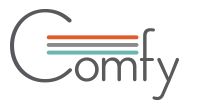Over two-thirds of the U.S. workforce find themselves disengaged from their work, according to Gensler's workplace surveys. Across the last decade, workplace stress has risen—with more workers struggling to focus and work effectively. Most scholarly research agrees that the key workplace design factors impacting the performance of knowledge workers include noise, lighting, temperature, and spatial arrangements.
Are we experiencing a productivity crisis? Fortunately, smart building tech offers solutions by way of greater customization—fine tuning work environments to the needs of employees and occupants. Let's investigate some of those factors.
Lighting
Impact on Productivity: Better lighting design and more access to natural light can significantly improve office worker productivity as well as general health and well-being. The Center for Building Performance and Diagnostics at Carnegie Mellon has identified a dozen studies linking lighting to improvements in productivity, with some showing increased individual productivity of up to 23%. These gains are attributed in part to improved reading comprehension as well as reduced absenteeism.
Solution: Over the last decade, major technological advances in lighting, such as improved LEDs and responsive lighting have made it technically possible and more cost-effective to provide quality indoor lighting. In addition to improved light bulbs and lighting controls, "smart windows" and electrochromic glass are now making it easier for more occupants to enjoy natural light without the uncomfortable glare.
Noise
Impact on Productivity: It seems obvious that open offices, which have become increasingly popular since the 1950’s, would directly impact noise levels. Although ambient sounds, like the low-level bustle of a coffee shop, can sometimes boost productivity, noise consistently ranks as one of the biggest complaints in modern offices. Overheard conversations are especially disruptive, with knowledge workers citing it as the main culprit in preventing focused work. The Center for Building Performance and Diagnostics has identified 14 studies linking quieter working conditions with 1.8% to 19.8% percent gains in individual productivity.
Solution: Aside from noise-canceling headphones, improvements in spatial design, and the use of sound absorbing building materials, there are several types of smart building tools that can help mitigate the productivity losses attributed to noise. Smart building tech such as tools that can measure and regulate acoustics throughout the office, improved sensor networks, and room reservation apps offer the promise of acoustic comfort by enabling individuals to identify the ideal acoustic environment for their ever-changing needs.
Spatial Arrangements
Impact on Productivity: According to Gensler's 2016 U.S. Workplace Survey, that measures employees performance and innovation in relation to how they interact with their environment, high performing employees tend to have access to, and take advantage of, a greater variety of workspaces. This is reflected in more activity-based workplace designs and the growing use of hot desking.
Solution: Numerous software platforms now exist that specialize in helping employees quickly find and reserve workstations and rooms to accommodate their changing needs throughout the day. For offices that offer a variety of workspaces, these tools can help employees better understand and take advantage of the options their employers have provided to help them be as comfortable and productive as possible. They also eliminate those awkward moments of wondering whether a desk is occupied or desperately searching for a quiet corner for a phone call.
Temperature
Impact on Productivity: An office place that is too hot or too cold leads to distractions and impaired cognitive function. However, not everyone is optimally productive at the same temperature. ASHRAE has standards for recommended indoor operating temperatures that meet 80% of building occupants’ needs, but that means the other 20% may not be happy with the temperature. A 1996 study from the International Centre for Indoor Environment and Energy in Denmark estimated that providing workers with ± 3 degrees of individual control would increase performance for logical thinking and very skilled manual work by 3%, and increase typing performance by 7%. And those gains in productivity translates to real dollars. According to a 2004 Cornell study, raising the temperature to a more comfortable thermal zone saves employers about $2 per worker, per hour. Some quick math shows that means a savings of over $4,000 for just one full-time employee over the course of a year.
Solution: There's currently one smart building software that allows workers to control their workspace temperature instantly, improving employee comfort and productivity while learning individual preferences: Comfy!

 Request a Demo
Request a Demo






